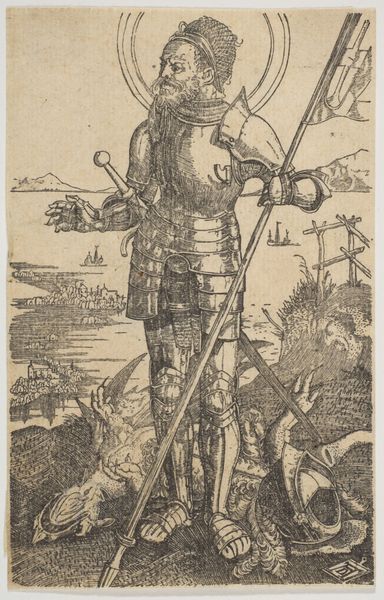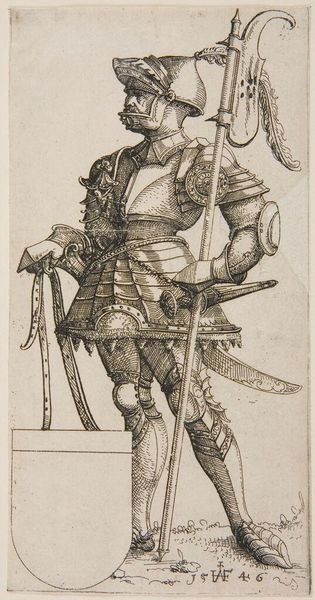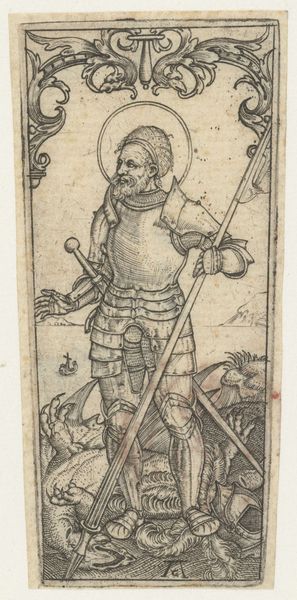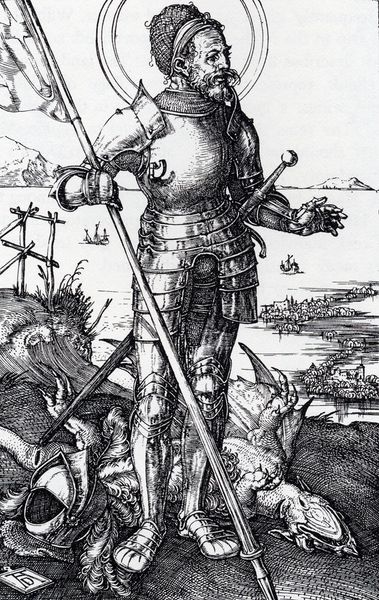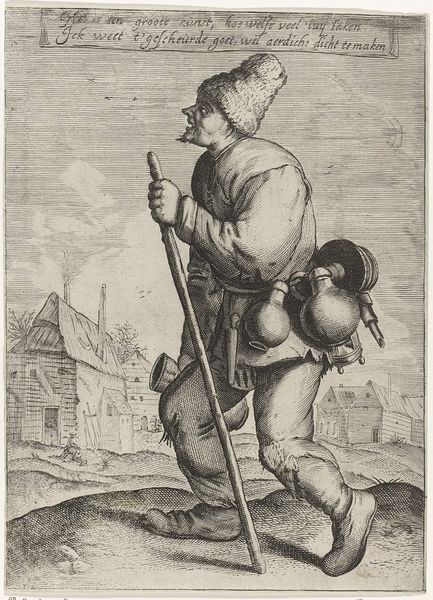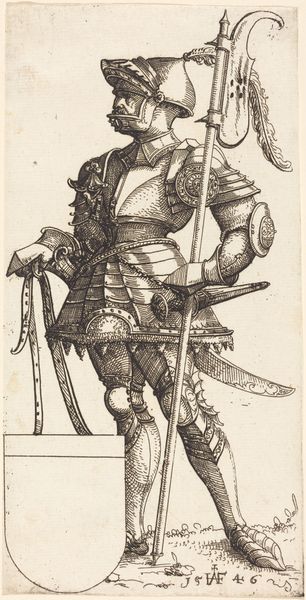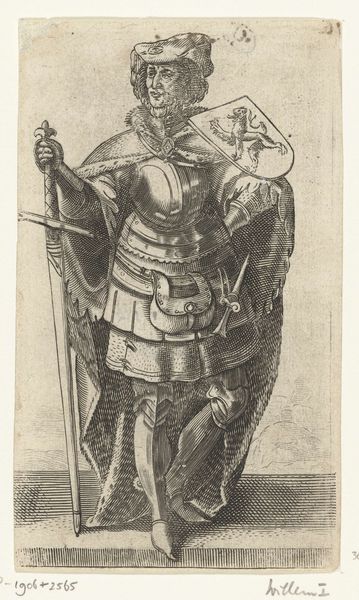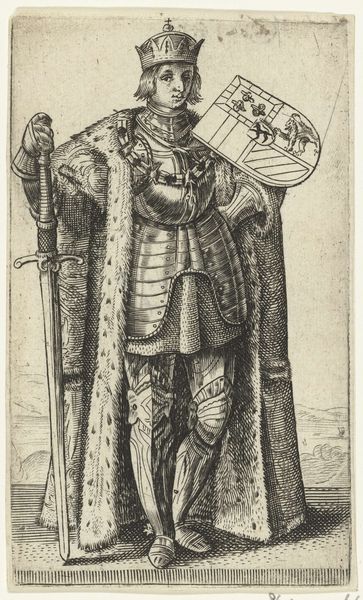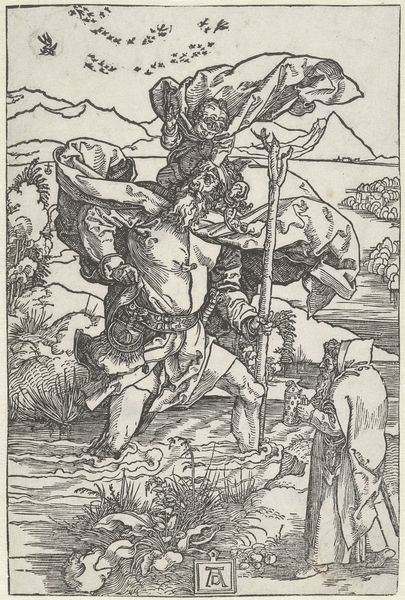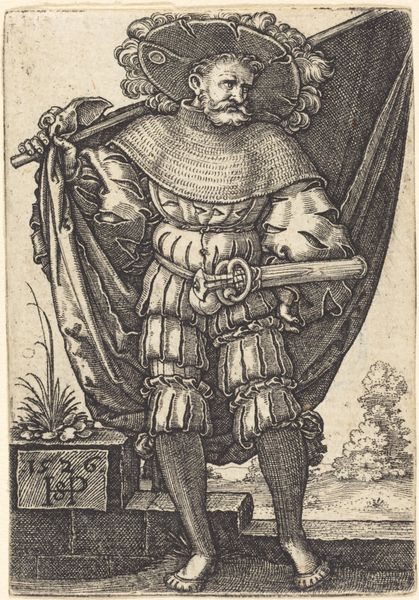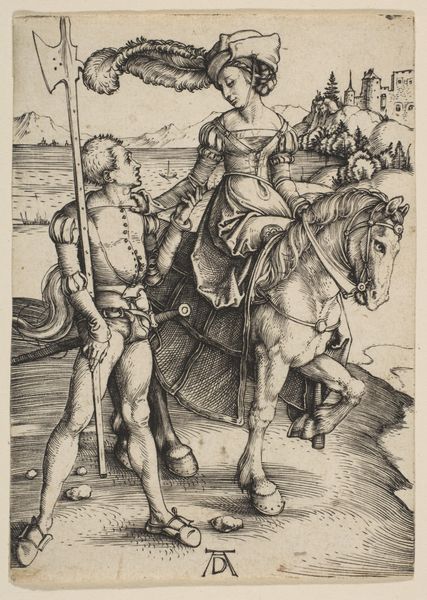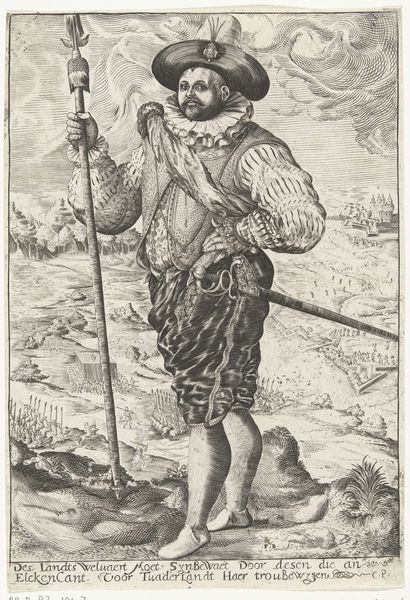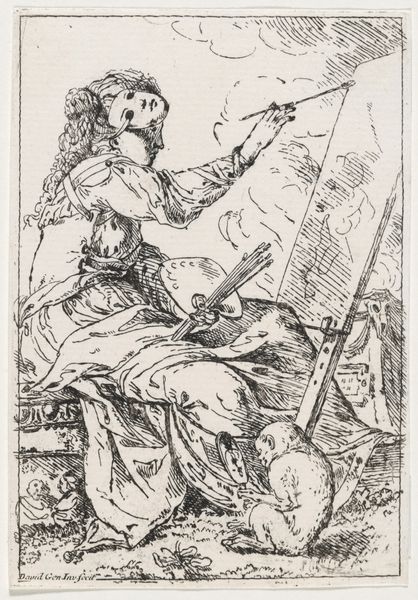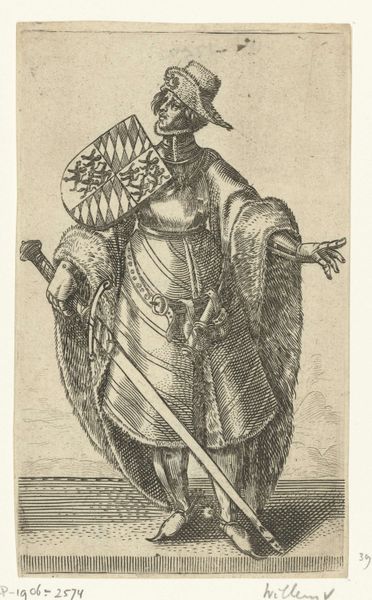
drawing, print, engraving
#
portrait
#
drawing
# print
#
figuration
#
history-painting
#
armor
#
northern-renaissance
#
engraving
#
sword
Dimensions: Sheet: 4 7/16 × 2 13/16 in. (11.3 × 7.2 cm)
Copyright: Public Domain
Editor: Here we have Albrecht Dürer's "Saint George Standing," created between 1502 and 1503. It's an engraving, so a print, and it depicts Saint George in full armor standing over a defeated dragon. It strikes me as a powerful image, but also very controlled and precise. How do you interpret this work? Curator: I see this engraving as a potent representation of the anxieties and power dynamics inherent in early 16th-century European society. Dürer wasn't just illustrating a biblical story, he was engaging with complex ideas about faith, the state, and individual agency. Consider the dragon, often interpreted as a symbol of evil or chaos. Who, exactly, is this 'evil' in Dürer’s context? Editor: Are you saying that the dragon isn’t just a literal monster? Curator: Exactly. Think about the rise of powerful empires, religious conflicts, and social unrest of the time. The “dragon” could be interpreted as any force threatening the established order – perhaps even challenges to religious authority. And St. George, with his imposing armor and resolute stance, embodies the ideal Christian knight, defending not just the faith, but a certain hierarchical social structure. His armor isn't just protection; it's a visual assertion of power. Editor: So, it's about more than just good versus evil? It reflects the struggles for power and control within society at the time? Curator: Precisely. It highlights how power structures and religious narratives were interwoven to legitimize social hierarchies and suppress dissent. How does that revised interpretation sit with your first impressions of it? Editor: It adds a whole new layer! I initially saw it as a straightforward heroic depiction, but understanding the potential for the dragon representing societal anxieties and the knight embodying the defense of those hierarchies really changes the narrative. Curator: That's the beauty of art history; it’s not static, but shifts with the times and perspectives we apply to it.
Comments
No comments
Be the first to comment and join the conversation on the ultimate creative platform.
